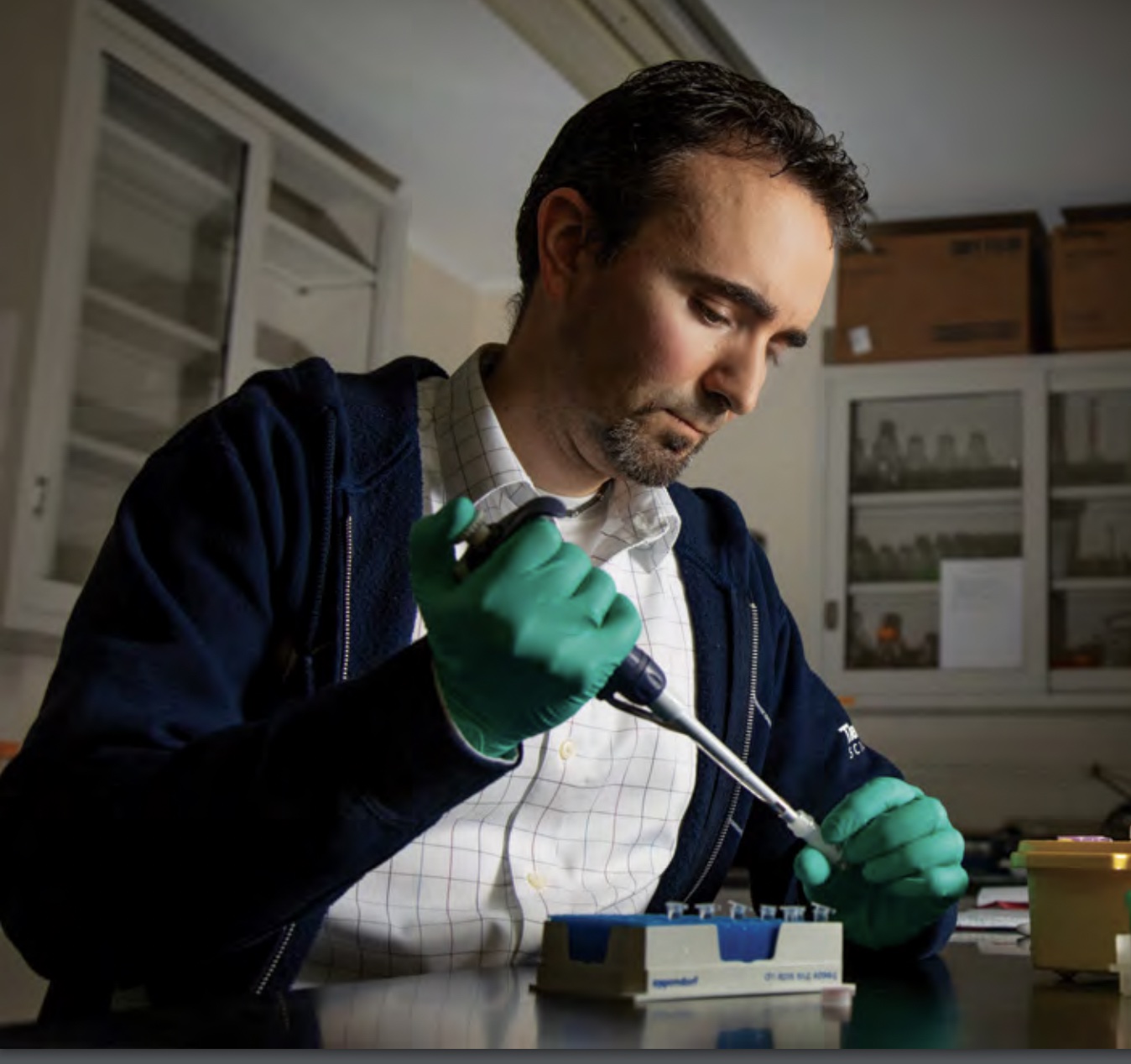
Research
My lab focuses on functional genomic analyses of vector arthropods and their holobiont - that is, the host and assemblage of commensal organisms (viruses, bacteria and eukaryotes) that
live within and around them. This often involves identifying, characterizing and surveilling emerging zoonotic infectious diseases within arthropod hosts as well as the environment. Current major research initiatives include:
• Novel means of rapid and non-destructive vector-borne pathogen sampling and discovery. My lab is developing protocols that employ shotgun metagenome sequencing of e.g., saliva and excreta collected from custom fabricated excreta-collecting devices. These data deliver a wealth of information about vector populations that
traditional assays such as qPCR pathogen screens do not, and break a common paradigm of vector-borne disease surveillance in that one does not utilize homogenized insects as template and therefore circumvents complex lab procedures
and biosafety requirements. This work is funded by the National Institutes of Health R21 Exploratory/Developmental Research Grant Program (D. Price, P.I) and the American Mosquito Control Association Research Fund.
• Reverse-vaccine development targeting invasive arthropods. The recent discovery of established populations of the invasive Asian long-horned tick, Haemaphysalis longicornis in New Jersey has major implications for
both agriculture and human health. This tick had not been reported previously from the United States and is an exotic vector of both human and livestock pathogens, as well as a burdensome mammalian pest. Together with
collaborators at the USDA-ARS and Texas A&M AgriLife Extension, my lab has begun the process of reverse-vaccine development using N. American H. longicornis genome data in search of candidate genes and associated proteins of
utility in reverse-vaccine approaches targeting this tick before this tick establishes itself as a major livestock pest. This work is funded by the USDA-NIFA AFRI Animal Health Program (D. Price, P.I)
• Tick-borne disease dynamics and discovery in a rapidly changing landscape. A strategic approach to tick-borne disease surveillance requires an appreciation of the diverse ecosystems that support these zoonotic pathogens.
This is particularly true for New Jersey, a state that impressively spans five EPA-defined ecoregions and dozens of forest types. The goal of this project is to initiate a pilot study that assesses the risk to humans and animals of both
known and potentially novel tick-borne disease throughout a broad selection of urban and rural new Jersey forest ecosystems by using infected ticks of multiple species as a proxy. We will accomplish this using molecular tools by
screening ticks for known tick-associated pathogens via both qPCR and amplicon metagenome sequencing to identify new or emerging potential pathogens. This work is funded by the Hunterdon Health Foundation and the McIntire-Stennis
capacity grant program (D. Price, P.I).
• Genotyping and spatiotemporal distribution of arthropod-borne viruses. This work seeks to elucidate the spatiotemporal distribution and frequency of newly emergent
West Nile Virus genotypes identified in my lab from within New Jersey by genotyping positive mosquito pools collected between 2018 and 2021. These data will aid in determining whether any may have arisen in conjunction
with (or as a result of) the increased enzootic transmission and record-setting WNV epizootic disease outbreak during the summer of 2018. This work is funded by the New Jersey Department of Environmental Protection (D. Price, P.I)
Summary of education and employment
B.S. in Biology (2001) from Rutgers University; I spent the next six years as a UNIX I.T systems administrator maintaining high-performance computing and server infrastructure at the departmental and central levels here at Rutgers prior to melding my interests in computing and biology as a staff bioinformatician while also completing a Ph.D in vector biology. I joined the faculty in 2015 as an Associate Research Professor tasked with creating an independently-funded research lab.
Publications
Please see Google scholar for a current list of publicationsCV (PDF)


